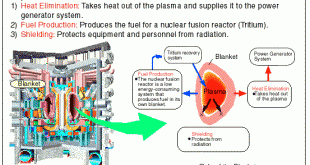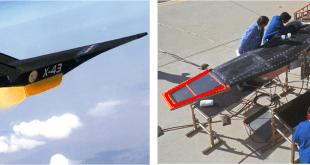For decades, military personnel around the world have trained for combat using laser-based systems like the Multiple Integrated Laser Engagement System (MILES). This technology, akin to a sophisticated game of laser tag, uses lasers attached to weapons and sensors on soldiers to simulate combat scenarios and provide real-time feedback on hits and outcomes. However, as the needs of modern warfare continue to evolve, so too are the approaches to training, prompting the U.S. Army to explore innovative alternatives.
Training for the Battlefield with MILES
For decades, the Multiple Integrated Laser Engagement System (MILES) has been a mainstay in military training, serving as a crucial tool for simulating combat scenarios and enhancing soldier readiness. But what exactly is MILES, and how does it work?
A Simulated Battlefield:
MILES is akin to an advanced game of laser tag, but specifically designed for military applications. It equips soldiers with laser emitters attached to their firearms and sensors worn on their uniforms or body armor. When a soldier “fires” their weapon, the laser beam is detected by the opposing force’s sensors, registering a “hit” and providing real-time feedback. This allows soldiers to practice maneuvers, tactics, and battle procedures in a safe and controlled environment.
Key Features of MILES:
- Realistic Training: MILES allows soldiers to experience the stress and decision-making associated with combat situations without the risks of live ammunition. It provides a platform to practice firefighting techniques, unit coordination, and battlefield communication in a simulated environment.
- Immediate Feedback: The system provides instant feedback on whether a target has been successfully engaged. This allows soldiers to identify their strengths and weaknesses, and instructors can offer immediate guidance and corrective measures.
- Scalability and Adaptability: MILES can be scaled to accommodate various training exercises, from small-unit maneuvers to large-scale battles. Additionally, the system can be adapted to different training scenarios, including urban warfare, mountain combat, and close-quarters battle.
Limitations and Future of MILES:
While MILES has played a vital role in military training, it does have limitations. The system can be susceptible to environmental interference like fog or dust, and it may not accurately simulate the effects of certain weapons like mortars or grenades. Additionally, MILES primarily focuses on direct fire engagements, limiting the training scope for modern battlefields.
Moving Beyond Legacy Systems:
Recognizing these limitations, the U.S. Army is currently exploring next-generation training technologies like the Synthetic Training Environment (STE) to supplement and potentially replace MILES in the future. These advanced systems aim to offer a more immersive and realistic training experience through virtual reality, augmented reality, and artificial intelligence.
The Army’s Synthetic Training Environment Cross-Functional Team, led by Brig. Gen. William Glaser, is taking the lead in modernizing training technology by looking beyond laser-based systems. Recognizing the limitations of MILES, which has been in use since the 1980s with incremental upgrades, the Army is seeking solutions that leverage cutting-edge technologies for more realistic and effective training.
Embracing New Frontiers:
One such solution is the SIMRES system, developed by Lockheed Martin. This geo-paired system marks a paradigm shift in force-on-force training. Unlike MILES, which struggles with environmental interference and limited engagement types, SIMRES utilizes GPS technology and advanced sensors to provide accurate feedback in diverse scenarios, including simulations of indirect fire. Additionally, lightweight universal weapon orientation modules within the system offer precise data collection on soldier performance and engagement dynamics, creating a more comprehensive training experience.
Unlike its predecessors, SIMRES leverages GPS technology and advanced sensors to overcome environmental obstacles and provide accurate feedback in a variety of engagement scenarios, including simulations of indirect fire.
Environmental Challenges:
- Laser-based systems like MILES can be significantly affected by environmental factors such as fog, rain, and dust. These elements can disrupt the laser signal, leading to inaccurate readings and unreliable feedback. This can hinder the training experience and limit the types of scenarios that can be effectively simulated.
- SIMRES, on the other hand, utilizes GPS technology as the primary method of tracking engagement. GPS signals are not susceptible to the same environmental limitations as lasers, allowing for consistent and reliable feedback regardless of weather conditions. This ensures that soldiers receive accurate information during training, even in challenging environments.
Engagement Limitations:
- Traditional laser systems are often limited to simulating direct fire engagements, where soldiers are directly aiming at each other. This restricts the scope of training and doesn’t fully capture the complexities of modern warfare, which often involve indirect fire such as mortars and artillery.
- SIMRES, through its advanced sensor technology, can simulate indirect fire scenarios. This allows soldiers to train in a more realistic setting, where they encounter various types of threats and learn to adapt their tactics accordingly. This broader range of engagement possibilities creates a more comprehensive and valuable training experience.
Beyond Basic Feedback:
- Laser-based systems typically only provide binary feedback, indicating whether a “hit” or “miss” has occurred. This limited information can hinder deeper analysis and improvement.
- SIMRES goes beyond basic feedback by collecting data on various aspects of the engagement, such as weapon orientation, movement, and reaction times. This comprehensive data can be used to analyze individual and unit performance, identify areas for improvement, and tailor future training accordingly. This data-driven approach allows for more personalized and effective training, ensuring soldiers are better prepared for the battlefield.
In summary, SIMRES’s combination of GPS technology, advanced sensors, and broader engagement capabilities overcomes the limitations of traditional laser-based systems, offering more accurate feedback, diverse scenario simulation, and comprehensive data collection, ultimately leading to enhanced training effectiveness and soldier preparedness.
The Road Ahead:
With SIMRES still under development and fielding expected by 2027, the Army is poised to usher in a new era of immersive and effective training methodologies. This strategic shift underscores the Army’s commitment to embracing technological innovation to better prepare its personnel for the complexities of modern warfare. By embracing cutting-edge solutions and moving beyond legacy systems, the Army is shaping the future of military training, ensuring its readiness to meet the challenges of tomorrow’s battlefield.
 International Defense Security & Technology Your trusted Source for News, Research and Analysis
International Defense Security & Technology Your trusted Source for News, Research and Analysis


